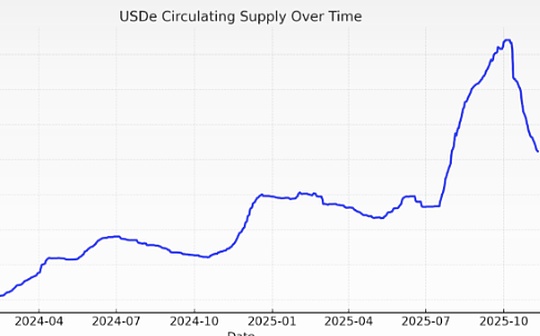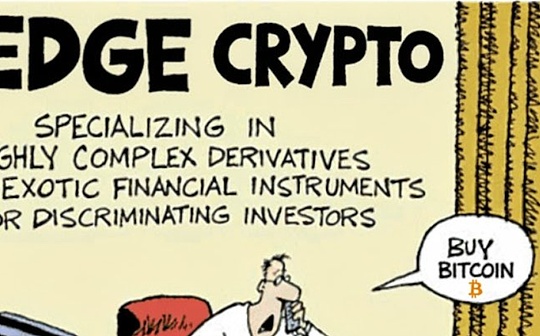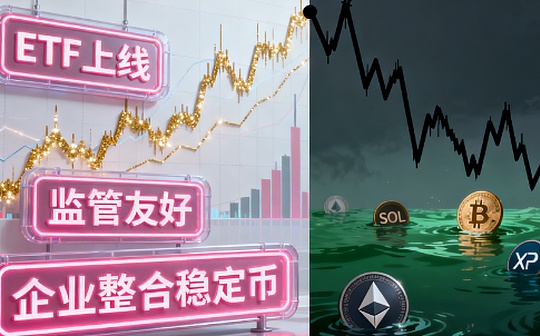
Author: Zhang Feng
Blockchain technology is reshaping the global financial and trust system with its decentralized, non-tamperable, open and transparent characteristics.However, this “permission-free” freedom also brings huge challenges in supervision and compliance.Risks such as money laundering, terrorist financing, and transactions with sanctioned entities hang high over the entire industry like the sword of Damocles.How to introduce the compliance framework of the traditional world onto the chain without stifling innovation and openness has become a key proposition for blockchain to become mainstream.“On-chain compliance” emerged from this, and with Chainlink’s cooperation with industry giants like Chainalysis, it is moving towards a new era of “programmable compliance automation”.
1. On-chain compliance: paradigm shift from “ex post facto tracing” to “during interception”
On-chain compliance, in short, is to embed compliance rules and logic in the form of code into the life cycle of blockchain transactions, so that it can automatically perform compliance checks before or when a transaction occurs, rather than relying solely on judicial traceability after the transaction.
Traditional financial compliance relies on centralized institutions (such as banks and payment companies) to perform KYC (Know Your Customer), AML (Anti-Money Laundering) and sanctions list screening in the background.This system faces failure in the on-chain world: blockchain addresses are pseudo-anonymous, transactions flow globally and are completed instantly, and there is no single gatekeeper.Therefore, early on-chain compliance mostly relied on “post-facto” analysis tools provided by blockchain analysis companies such as Chainalysis and Elliptic. Law enforcement agencies and exchanges used them to track the flow of illegal funds, but this was a “remedial step”.
True on-chain compliance aims to achieve“Prevention beforehand” and “interception during the incident”.The core idea is to turn compliance logic into a “state” that can be read and executed by smart contracts.For example, a decentralized financial protocol can automatically query whether the user’s wallet address is associated with a known illegal address before the user executes a transaction, and automatically decide whether to release or reject the transaction based on the query results.This not only moves the location of compliance inspections forward, but also transforms it from a manual-intensive, report-driven process to a real-time, automated, programmable infrastructure.
2. Current status of the industry: fragmented efforts and centralized bottlenecks
Before the emergence of the cooperation plan between Chainlink and Chainalysis, the industry’s attempts at on-chain compliance were fragmented.
The Gatekeeper Role of Centralized Exchanges: Currently, the most important compliance pressure is borne by centralized exchanges.They strictly enforce KYC and AML within their platforms and act as the main gatekeepers connecting the fiat and crypto worlds.However, this is only compliance within its centralized walls, and once assets are moved to an on-chain DeFi protocol, its control is significantly reduced.
DeFi protocol’s self-discipline attempt: Some DeFi protocols try to integrate simple compliance tools, such as using public address blacklists.However, this method often has problems such as untimely data updates, limited coverage, and possible circumvention (such as through coin mixers).More importantly, protocol developers are not compliance experts. Maintaining a global and dynamic compliance database by themselves is unrealistic and carries a heavy responsibility.
Isolated applications of analytical tools: For example, the API provided by Chainalysis, although the data is powerful, needs to be actively called by the project party and integrated into its centralized back-end system.This has led to several problems: First, the integration work is complex and non-standard; second, the execution of compliance logic still relies on the centralized server of the project party, which is not fully on-chain, with insufficient transparency and automation; third, for completely decentralized protocols, there is no clear “subject” responsible for calling these APIs.
Although these efforts are beneficial, they fail to form a universal solution that is standardized, automated, and can interact natively with smart contracts.On-chain compliance requires an infrastructure like a power network, allowing any DeFi application to be “plug and play”.
3. Building an on-chain compliance automation infrastructure: taking the cooperation plan between Chainlink and Chainalysis as an example
The cooperation between Chainlink (the oracle network) and Chainalysis (the leader in blockchain data analysis) is precisely to build the above infrastructure.The solution cleverly combines Chainalysis’ world-class compliance data with Chainlink’s ability to connect the off-chain world with the on-chain world.
The core architecture of the solution includes data sources, transport layers and on-chain interfaces.
Data source: Chainalysis Orion: Chainalysis provides data from its “Orion” tool, a database of millions of addresses associated with illegal activity, accompanied by a risk score.This data is its core asset in serving government agencies and financial institutions for many years, covering various risk categories such as sanctions, hackers, fraud, and darknet markets.
Transport layer: Chainlink oracle: Chainlink’s decentralized oracle network is responsible for transmitting Chainalysis’ compliance data (such as the risk score of an address) to multiple blockchains (such as Ethereum, Polygon, Avalanche, etc.) in a verifiable and tamper-proof manner.
On-chain interface: compliance status feed: Data transmitted to the chain is structured into a “compliance status feed” that is easy to query by smart contracts.Simply put, it is like a continuously updated “compliance list” or “risk score table” on the chain, and any smart contract can query the status of an address through standard function calls.
The operation process generally includes protocol integration, user-initiated transactions, automatic compliance checking, oracle response, conditional execution, etc.
Assume that Aave, a decentralized lending protocol, wants to integrate this compliance solution. The operation process is as follows:
Step 1: Protocol Integration.Aave’s smart contract was upgraded to add a query call to Chainlink’s compliance feed in the key function where users perform deposit or borrowing operations.
Step 2: User initiates transaction.User Alice attempts to deposit 10 ETH on Aave to lend out USDT.
Step Three: Automated Compliance Checking.Before a transaction enters the memory pool but is not packaged on the chain, Aave’s smart contract will automatically send a request to Chainlink’s compliance feed: “Query the risk score of address Alice.”
Step 4: Oracle response.The Chainlink oracle network receives the request, obtains the latest risk score of Alice’s address from the Chainalysis Orion database, signs it and sends it back to the chain.
Step 5: Conditional execution.Aave’s smart contract receives the response.If the score shows “low risk”, the transaction is executed normally; if it shows “high risk” (for example, the address is marked as related to a sanctioned entity), the smart contract will automatically roll back the transaction and inform the user that “the transaction was rejected for compliance reasons.”The entire process is completed automatically within seconds without any manual intervention.
4. The plan meets precise, dynamic and auditable compliance requirements
This automated solution meets increasingly stringent global compliance requirements from multiple dimensions.
Meet OFAC and other sanctions requirements: The sanctions list of the U.S. Treasury Department’s Office of Foreign Assets Control is a rule that the global financial system must abide by.This solution can ensure that DeFi protocols automatically reject transactions with relevant addresses on the SDN list, directly meeting OFAC’s core compliance requirements and avoiding legal risks that the protocol and its users may face.
Implement dynamic risk monitoring: Unlike traditional one-time KYC, the risk of on-chain addresses changes dynamically.An address that is clean today may become “dirty” tomorrow due to receiving stolen money from hackers.Chainalysis data is continuously updated and synchronized to the chain in near real-time through the Chainlink oracle, enabling dynamic and continuous monitoring of risks, far exceeding the capabilities of static lists.
Improve transparency and auditability: All compliance check logic and results are recorded on the blockchain and are publicly available.Regulators can clearly trace the decision-making process of any rejected transaction and verify whether the protocol actually implemented compliance rules.This “verifiable compliance” provides unprecedented transparency into regulation.
Achieve clear boundaries of responsibilities: For DeFi protocol developers and managed DAOs, this solution provides a standardized tool to fulfill their compliance obligations.By integrating this infrastructure, they can clearly demonstrate that they have taken “reasonable measures” to prevent illegal activity, building a strong legal defense.
5. Cross-border collaboration between technology, industry and law
Achieving such complex on-chain compliance automation is beyond the reach of experts in a single field. It requires deep and seamless collaboration among technical experts, industry experts and legal experts.
Role of Technical Expert (Chainlink/Smart Contract Developer): Their core mission is to ensure the reliability, security and decentralization of the system.This includes: designing a robust oracle network to ensure tamper-proof and high availability of data transmission; writing strictly audited smart contract code to ensure that compliance logic is accurately executed; and thinking about how to minimize Gas consumption and avoid network congestion.They are the “engineers” of the rules, responsible for transforming abstract logic into irrefutable code.
Role of Industry Expert (Chainalysis/Compliance Officer): They are the “definers” of compliance rules and the “guardians” of data.Its responsibilities include: leveraging its deep investigative experience and global intelligence network to continuously maintain and update the risk database to ensure its accuracy, timeliness and global coverage; maintain communication with regulatory agencies, understand policy trends, and transform complex legal provisions into machine-readable risk labels and rules.They need to find a precise balance between “over-shielding” and “insufficient protection.”
The role of legal experts (lawyers/academics/regulators): They are the “architects” of the compliance framework and the “arbiters” of disputes.In the early stages of program design, lawyers need to provide legal advice on the boundaries of “code is law”. For example, does automatic refusal of transactions constitute discrimination or unfairness?How to deal with possible false positives?When a dispute arises, legal experts need to interpret on-chain records and assess the responsibilities of the parties to the agreement.More importantly, they need to push for new legal interpretations and regulatory guidance that recognize the legal validity of this programmable compliance automation and provide it with “legal legitimacy.”
These three parties form a continuous feedback loop, that is, legal experts make requests, industry experts quantify them into rules, and technical experts encode and implement the rules.At the same time, new problems encountered in technology implementation (such as false positives) require industry and legal experts to work together to resolve them.This is a dynamic, co-evolving process.
6. Lawyers from clerical craftsmen to technical architects
The new type of on-chain compliance automation is profoundly reshaping the legal profession and placing unprecedented high demands on lawyers, especially those focusing on financial technology and blockchain fields.
Understand technical principles and become “bilingual”: Future lawyers can no longer stop at legal provisions.They must be able to understand the basic principles of smart contracts, oracles, and public and private key cryptography in order to effectively communicate with developers, evaluate the technical feasibility of compliance solutions, and make strong statements and defenses on technical issues in court.They need to become bilingual talents who are proficient in “legal language” and “technical language”.
Participate in compliant product design and become a “rule designer”: The lawyer’s role will extend from litigating and reviewing contracts, to participating in the design of compliance infrastructure.They need to think about: How to translate vague legal principles (such as “reasonable suspicion”) into precise, executable code logic?At what point in the transaction process should compliance rules be set?These design decisions will directly affect the legality and operational risks of the protocol.
Master on-chain forensics skills and become a “digital detective”: The blockchain itself is a complete audit trail.Lawyers need to master the ability to use blockchain browsers and analysis tools to collect evidence on the chain.When compliance disputes occur, they need to be able to independently track the flow of funds and interpret the transaction logs of smart contracts to build an evidence chain.This requires them to have the skills of a digital investigator.
Embrace interdisciplinary collaboration and become a “bridge”: The most successful blockchain lawyers will be those who can freely shuttle between technical teams, project parties, regulatory agencies and users, and accurately convey information and resolve misunderstandings.They need to have the unique ability to translate technical risks into legal language, while translating legal requirements into technical specifications.
The cooperation between Chainlink and Chainalysis marks the evolution of on-chain compliance from a passive, peripheral, manual workshop-style practice to an active, embedded, industrialized infrastructure.We are witnessing the beginning of the “programmable compliance” era. Compliance is no longer just a cost center and legal burden, but can be transformed into a composable and tradable on-chain service, becoming the core engine driving the secure and compliant growth of the next generation of DeFi applications.
However, the road remains challenging.The accuracy of data, the balance of privacy protection, the maintenance of the spirit of decentralization, and the inconsistency of global regulatory standards are all difficult problems that need to be continuously overcome.But there is no doubt that a grand experiment on the governance rules of the future digital world, led by technical experts, industry experts and legal experts, has begun.In this process, lawyers who can proactively embrace changes and continuously learn and evolve will not only not be absent, but will also become a key force in shaping new rules and building a new order.








